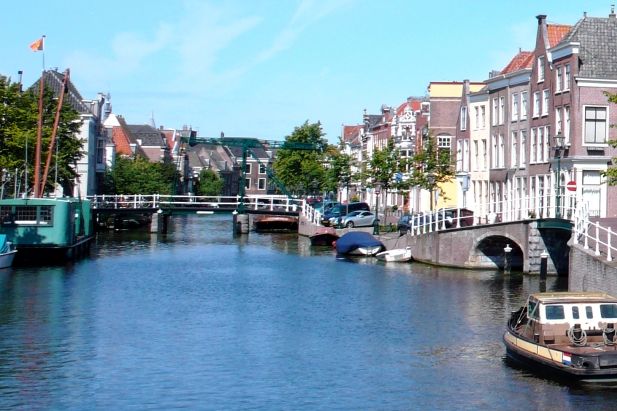


| |
The city of Leyden (Leiden), South Holland     |  |  |
Leyden Short Information Sheet:
|
|
Leyden Information Cloud:
|
|
|
From The Hague as a centre several of the towns best worth seeing can be easily reached. It is possible to visit Leiden, Delft, Gouda and Rotterdam in one day; it is superfluous to say that each deserves to have at least one day given to it. Leyden is only a few miles north of The Hague. It is situated on the Rhine, the waters of that river entering the city in two branches, the Old and New Rhine, uniting near its centre and flowing slowly through the town.
Leiden has the past glory of a siege successfully resisted, and a great Spanish army baffled in the struggle for independence; but her agony was more prolonged, and that feat of arms stands at the head of the wonderful roll of Dutch deeds of heroism and endurance. We will not linger over the world-known story of those terrible five months in 1573 and 1574, and of that marvellous deliverance. It stands on the page of history as one of the most striking of providential deliverances; the wind and the sea driving back the savage soldiery, who seemed inconquerable by any power less tremendous.
On January 2, 1575, the letter of William the Silent, recommending the project to the States-General, was read in the Sessions at Delft; on the next day it was adopted; and on February nth the University began its great career. The University was inaugurated with one of those elaborate allegorical celebrations so dear to the burghers of the Netherlands in that age. Leyden was intended to do for Dutch students what Louvain had hitherto accomplished. The University was endowed with the revenues of the Abbey of Egmont, and the staff of professors chosen from the most eminent men of the land. Every official was exempt from taxation, and received, duty free, his wine, beer, salt, soap, coffee, tea and books.
There are two or three old churches, notably that of St. Pancras, in which is a monument of Van der Werff, the noble burgomaster who so bravely conducted the great defence in 1574. It cannot be considered in any sense adequate and seems to have been chosen on the principle of inverse ratio, the man being as great as the memorial is insignificant. In the main street stands the chief architectural adornment of the city, the old Seventeenth Century Town Hall. It is well able to hold its own as a picturesque and typical example of Dutch building of that day. The spire is especially fine.
| |
|















